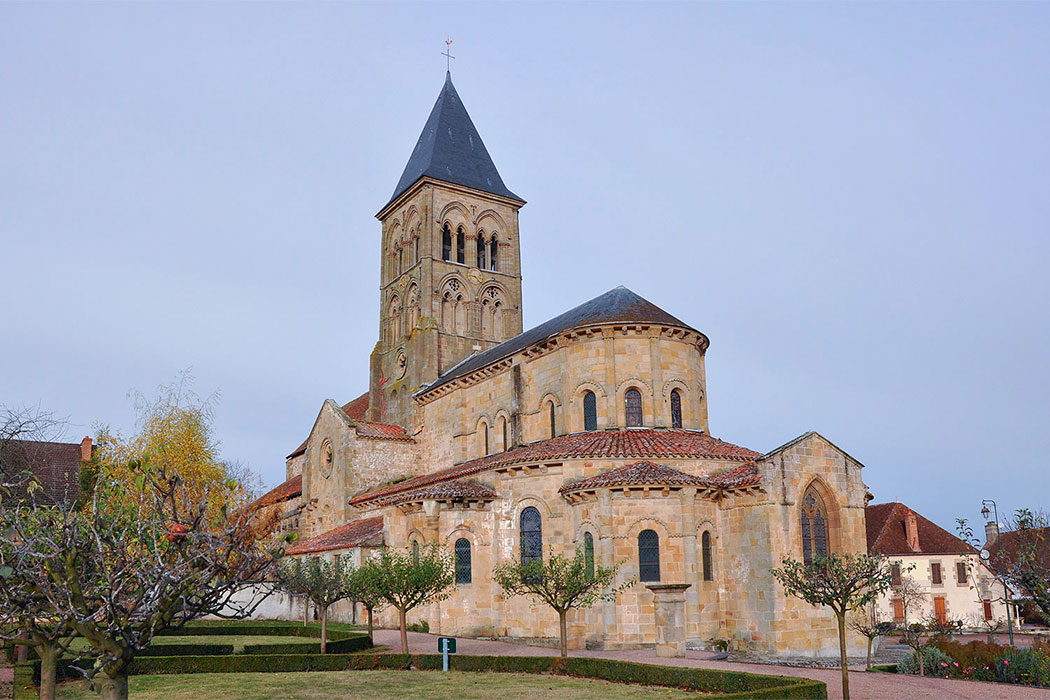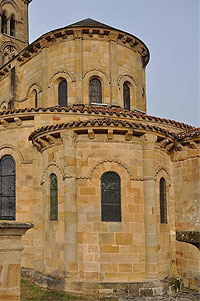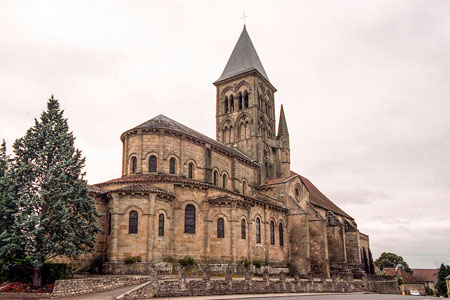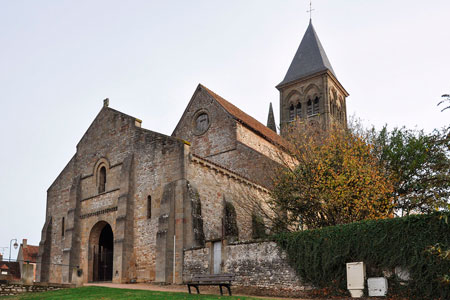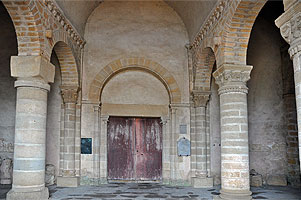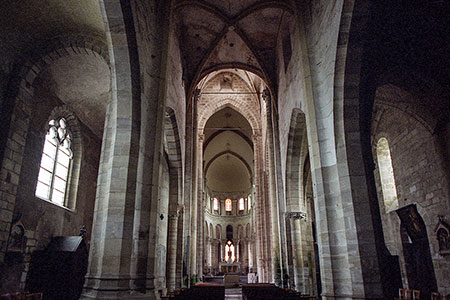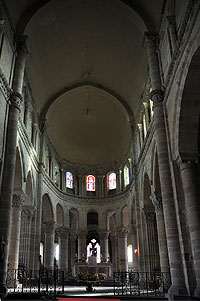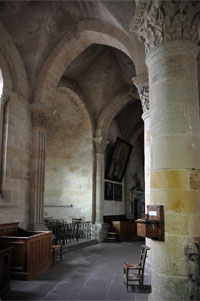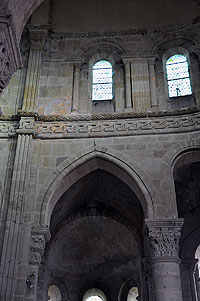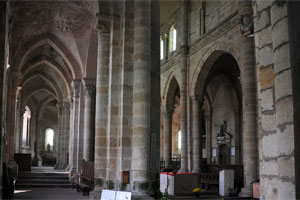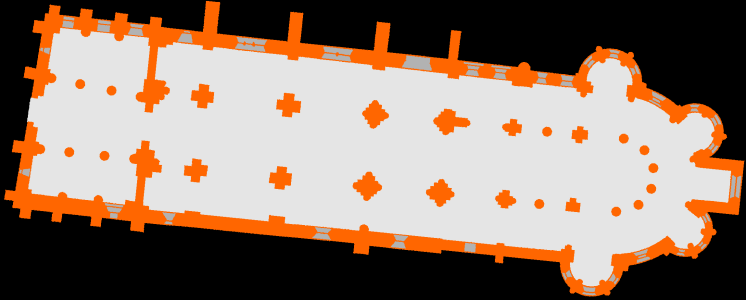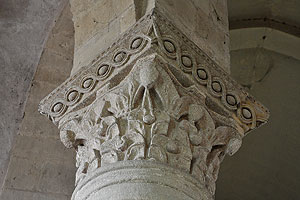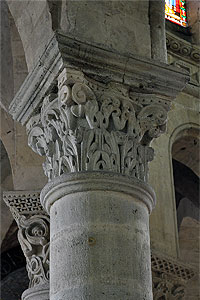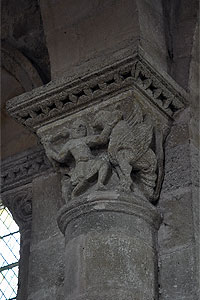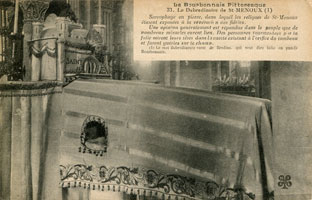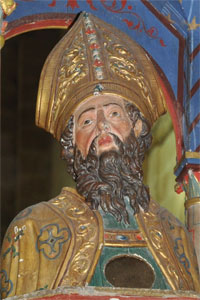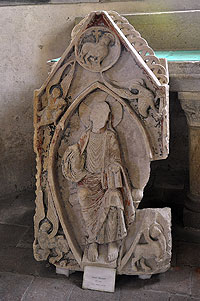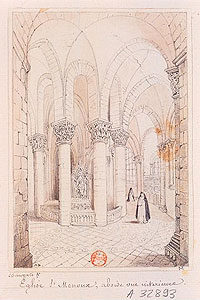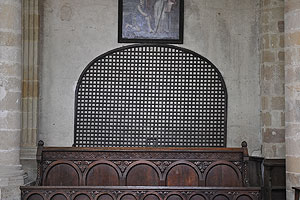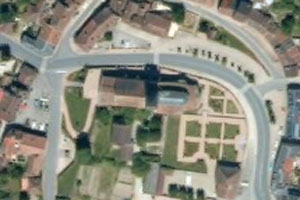According to tradition, Saint Menulf (Menoux or Menulphe), the patron of this house, lived in the 7th century. Originally from Ireland, he became bishop of Quimper (Finistère, Brittany). On his return from a pilgrimage to Rome, he passed through this place, then known as Mailly-sur-Rose, where he settled as a hermit, gathering a few followers around him.
After his death, Menulf was buried in the cemetery of the church of Saint-Germain, and his tomb soon became a site of devotion, to which several miracles were attributed. Tradition also mentions that his followers founded a first monastic community here, earlier than the later female one. Around the year 1000, a new church was built to house his relics, which were transferred in the presence of Dagbert (987–1013), bishop of Bourges.
This event marks the first mention of Abbess Adalgasie, confirming that the Benedictine nunnery was already active at that time. Although few documents have survived, the monastery appears to have been prosperous in its early period, benefiting from various privileges, such as one granted in 1125 by Archambaud VII of Bourbon (1095–1171). The lords of Bourbon remained its patrons for a long time. In 1507 the house joined the Congregation of Chézal-Benoît. During the 16th century it entered a period of decline caused by the Wars of Religion and the passage of the Huguenots (1560).
By the late 18th century, the community, though still active, was going through difficult times. It consisted of twelve nuns and the abbess, whereas before the conflicts of the 16th century there had been twenty-nine. In 1790, during the Revolution, the nuns were forced to abandon the monastery and disperse. The abbey was looted and its possessions confiscated; only the church was preserved, while the other monastic buildings were demolished. In 1795 the church of Saint-Menoux partly regained its worship, which was officially restored in 1802 when it became a parish church.
The large abbey church, now restored, still stands. It has three naves with an ambulatory opening onto the side aisles and five apsidioles. The transept, of the same width as the naves, is visible only in elevation. Essentially, it is a 12th-century construction, with an atrium at the west end that may be a remnant of an earlier building. At the centre of the chancel stands most of the tomb of Saint Menulf, which includes an opening known as the débredinoire. Through this aperture the faithful could reach the saint’s relics; according to tradition, inserting one’s head into it was believed to cure madness.
- DURET, Patricia (1988). L'ancienne église abbatiale de Saint-Menoux. Congrès archéologique de France, 146 ss. Bourbonnais. Société Française d'Archéologie
- BEAUNIER, Dom (1912). Abbayes et prieurés de l'ancienne France. Vol. 5. Bourges. Abbaye de Ligugé
- DESHOULIÈRES, François (1916). Saint-Menoux. Congrès archéologique de France, 80 ss. Moulins et Nevers. Société Française d'Archéologie
- DESHOULIÈRES, François (1939). Saint-Menoux. Congrès archéologique de France, 101 ss. Allier. Société Française d'Archéologie
- DUPONT, Jean (1976). Nivernais, Boubonnais roman. La nuit des temps, núm.45. Zodiaque, 1976
- DURET, Patricia (1988). L'ancienne église abbatiale de Saint-Menoux. Congrès archéologique de France, 146 ss. Bourbonnais. Société Française d'Archéologie
- GUÉRIN, Paul (1888). Les Petits Bollandistes. Vies des saints. Vol. 8. París: Bloud et Barral
- MORET, Jules-Jacques (1907). Histoire de Saint-Menoux. Moulins: Crépin-Leblond
- SAINT-MAUR, Congregació de (1720). Gallia Christiana in provincias ecclesiasticas distributa. Vol. 2. París: Typographia Regia
- TABUTIAUX, Agnès (2014). Une curiosité aux étranges pouvoirs : la débredinoire de Saint-Menoux, saint guérisseur de la folie. Revue d'histoire de la pharmacie, núm. 382
